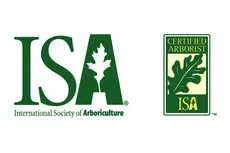When Is the Best Time to Trim Trees in Northern Wisconsin?
Tree trimming is a vital aspect of landscape maintenance, especially in the diverse climate of Northern Wisconsin. Proper trimming not only promotes healthy growth but also prevents hazards caused by dead limbs or unbalanced canopies. However, timing is critical—trimming at the wrong time of year can stress the tree, expose it to pests, or reduce flowering potential. In regions like Boulder Junction and Manitowish Waters, where seasonal weather is extreme, understanding when to trim is essential to maximize both health and safety. This blog will explore the best times of year to trim your trees and why thoughtful timing makes a significant difference in maintaining a healthy, thriving landscape.
1. Late Winter to Early Spring: Ideal for Most Tree Species
Late winter through early spring, just before the buds break, is widely considered the best time to trim most deciduous trees. During this dormant period, trees are less susceptible to diseases and insect infestations. Additionally, without leaves, the tree’s structure is more visible, allowing for precise cuts and better shaping. Trimming during this time also encourages vigorous spring growth, making it the most proactive season for maintenance.
2. Summer Trimming: Best for Controlling Growth
While major pruning is typically done in winter or early spring, light trimming in summer can be effective for managing fast-growing trees or correcting minor issues. Summer is also the right time to remove dead or damaged branches that have become apparent after spring growth. However, excessive trimming during the hot months should be avoided, as it can stress the tree and inhibit nutrient absorption.
3. Avoid Trimming in Fall
Although fall might seem like a convenient time for outdoor work, it’s one of the worst times to trim most trees. As trees begin to go dormant, they heal more slowly, making them vulnerable to fungal infections and decay. Additionally, many fungal spores are more active in the fall, increasing the risk of disease. Unless you're dealing with a safety hazard, it's best to postpone trimming until late winter.
4. Emergency or Hazard-Based Trimming: Any Time of Year
If a tree poses an immediate threat to people, property, or power lines, emergency trimming may be necessary regardless of the season. Removing dead or structurally compromised limbs promptly helps prevent injury and damage. Professional arborists have the tools and knowledge to perform these emergency services safely and effectively, even during challenging weather conditions.
In Northern Wisconsin’s variable climate, tree trimming should be done strategically to align with seasonal cycles. Proper timing promotes healthy trees, reduces the risk of disease, and enhances the beauty and safety of your property. For best results, consult a professional tree service that understands the unique regional conditions.
With 15
years of experience, Michlig Tree Service
proudly serves Boulder Junction and Manitowish Waters, Wisconsin, providing expert tree trimming services tailored to the region’s climate. Our team is committed to maintaining healthy, safe trees through seasonal care and precision techniques backed by years of hands-on expertise.


